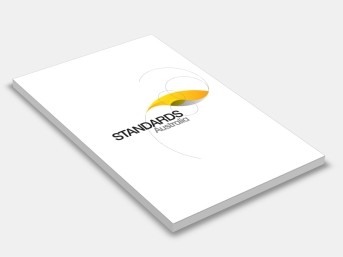AS 2699.1:2020 Built-in components for masonry construction, Part 1: Wall ties
Standards Australia
Supersedes: AS/NZS 2699.1:2000 Built-in components for masonry construction, Part 1: Wall ties
Draft Designation: DR AS 2699.1:2019This Standard is the first part of a three-part series on masonry wall ties, connectors and accessories, and lintels and shelf angles. The series comprises the following:
AS 2699.1, Built-in components for masonry construction, Part 1: Wall ties
AS 2699.2, Built-in components for masonry construction, Part 2: Connectors and accessories
AS 2699.3, Built-in components for masonry construction, Part 3: Lintels and shelf angles (durability requirements)
The objective of this Standard is to provide manufacturers with requirements for the classification of wall ties into three duty ratings.
Changes to the previous edition include the following:
(a) Type A cavity wall ties and veneer wall ties are classified according to mean strength only.
(b) Previous editions of this Standard included Type B ties, which were specified in New Zealand
only. These have been removed from this edition of the Standard.
(c) All ties are classified for their corrosion resistance.
(d) Provisions are also included for remedial (retrofitted) ties.
(e) Test methods are given for determination of —
(i) resistance to water transfer;
(ii) mean strength; and
(iii) corrosion resistance.
The types and spacing of ties necessary to meet design requirements are specified in AS 3700, Masonry
structures, and AS 4773.1, Masonry in small buildings, Part 1: Design and, AS 4773.2, Masonry in small buildings, Part 2: Construction.
The terms “normative” and “informative” are used in Standards to define the application of the
appendices to which they apply. A “normative” appendix is an integral part of a Standard, whereas an
“informative” appendix is only for information and guidance.
Notes to clauses in this Standard are for information and guidance only and conformance with them is
not a requirement of the Standard.
First published in Australia as AS INT 324-1953. Revised and redesignated as AS 2699-1984. First published in New Zealand as NZS 4210:1989. AS 2699-1984 and parts of NZS 4210:1989 jointly revised and redesignated as AS/NZS 2699.1:2000. AS/NZS 2699.1:2000 revised and redesignated AS 2699.1:2020.
This Standard specifies requirements for wall ties for use in tying together —
(a) the leaves of cavity masonry walls;
(b) masonry veneer walls and loadbearing frames; and
(c) masonry veneer walls against a strong backing wall.
This Standard applies to wall ties used in masonry described in AS 3700, AS 4773.1, and AS 4773.2, including those used in thin-jointed masonry [for example, autoclaved aerated concrete (AAC) blockwork].
NOTE 1: Type B wall ties are not used in this Standard. For Type B wall ties, refer to AS/NZS 2699.1:2000, which
provides definitions, embedment, movement and tolerance requirements, marking, and methods of testing.
NOTE 2: AS 2699.2 specifies the durability performance and test procedures for structural performance of
connectors and accessories used in masonry construction.
NOTE 3: AS 2699.3 specifies the requirements for durability of lintels and shelf angles.
NOTE 4: This Standard gives categories of wall ties, and classifies wall ties by mean strength and durability.
NOTE 5: The durability classifications employed in this Standard are compatible with the environments
specified in ISO 9223, AS 4312—2008, AS 3700, AS 4773.1 and AS 4773.2.
NOTE 6: Design and installation of wall ties are specified in AS 3700 and AS 4773.1 (design) and AS 4773.2 (construction).
Contents:
Section 1: Scope and general
Section 2: Performance criteria
Section 3: Materials
Section 4: Identification markings
Section 5: Testing
Appendix A: (normative) Method for determining the coating thickness of galvanized wall ties
Appendix B: (normative) Product conformity
Appendix C: (informative) Purchasing guidelines
Appendix D: (informative) Typical relationship of durability class to atmospheric corrosivity category
Appendix E: (informative) Tests to identify stainless steel grades
Appendix F: (normative) Method for determining the strength of Type A wall ties
Appendix G: (normative) Method for determining the resistance to water transfer
Masonry Wall Ties and Accessories.
BD-028
Australasian Corrosion Association; Australian Building Codes Board; Australian Industry Group; Australian Institute of Building Surveyors; Australian Stainless Steel Development Association; Australian Steel Institute; Bureau of Steel Manufacturers of Australia; Concrete Masonry Association of Australia; Galvanizers Association of Australia; Housing Industry Association; Materials Australia; Think Brick Australia; University of Newcastle.
